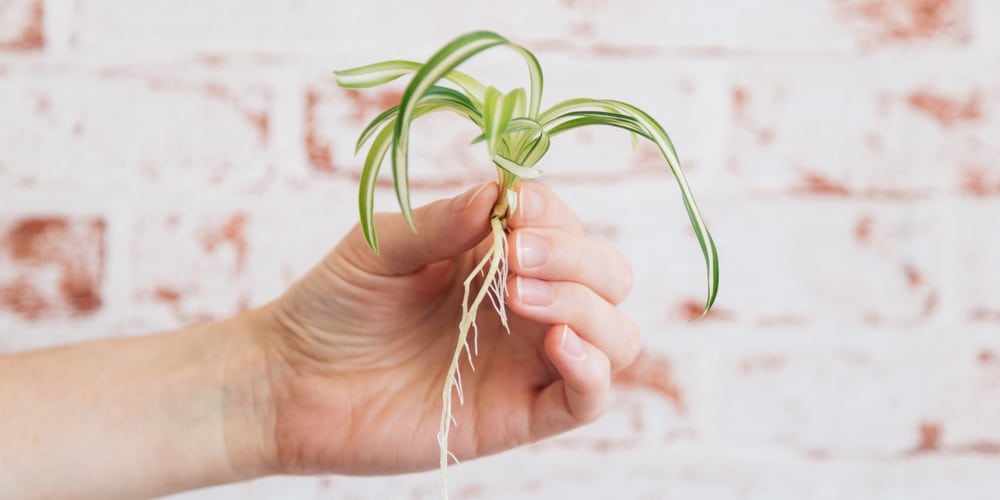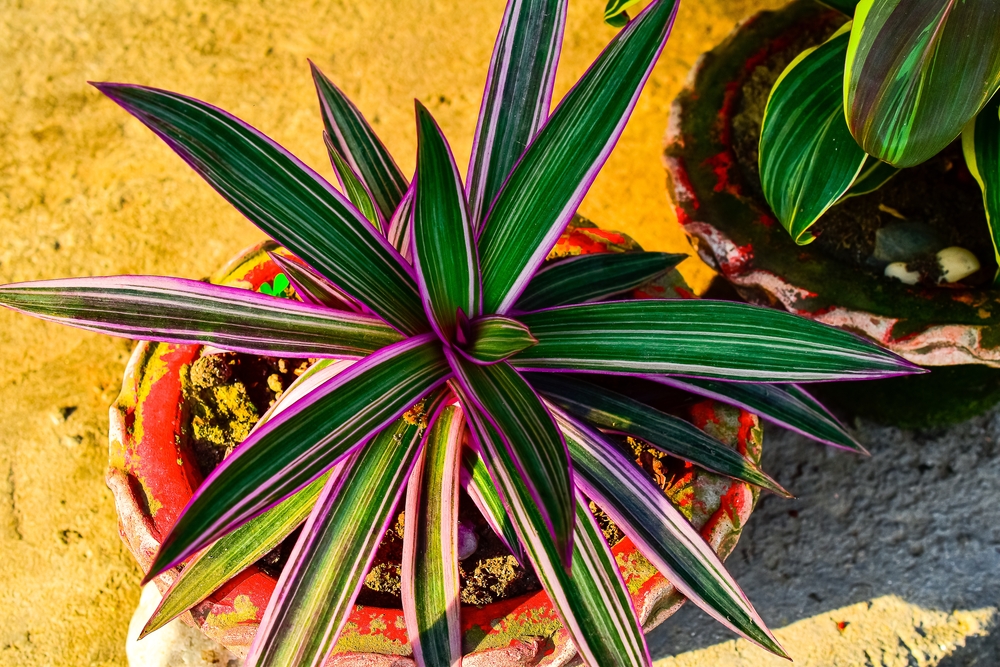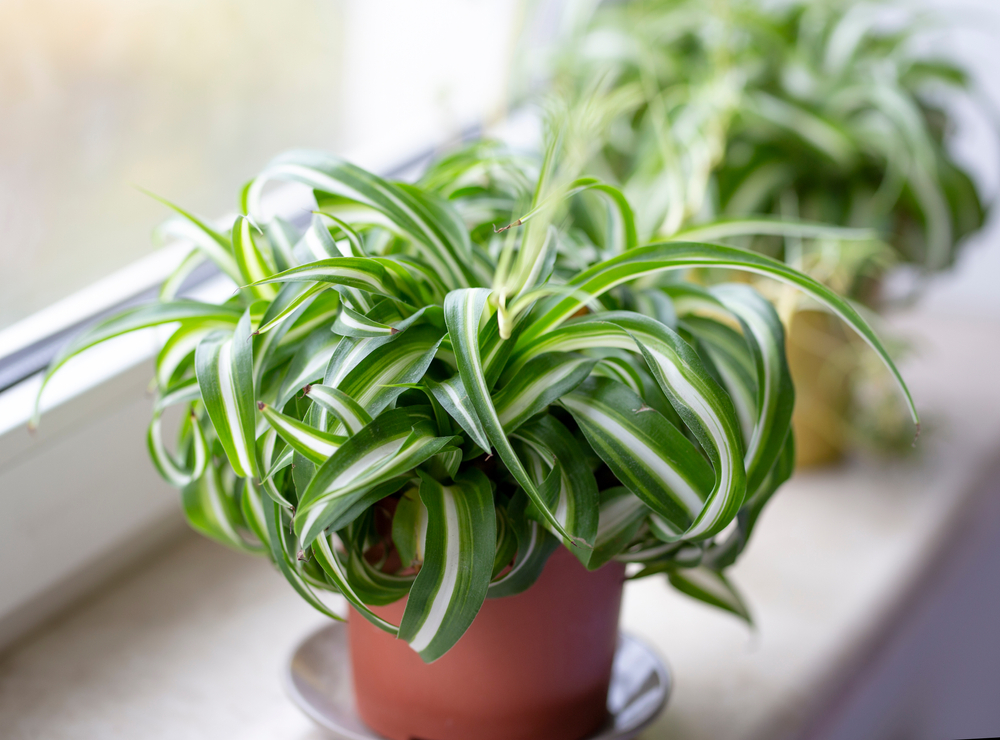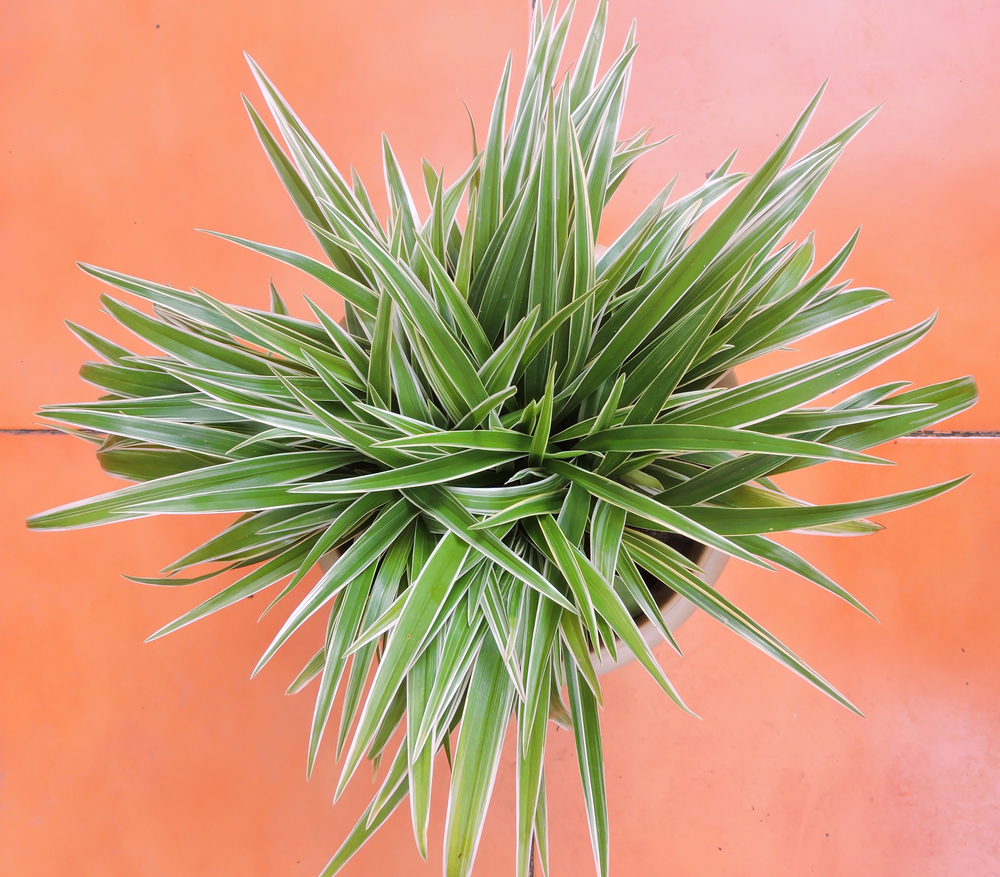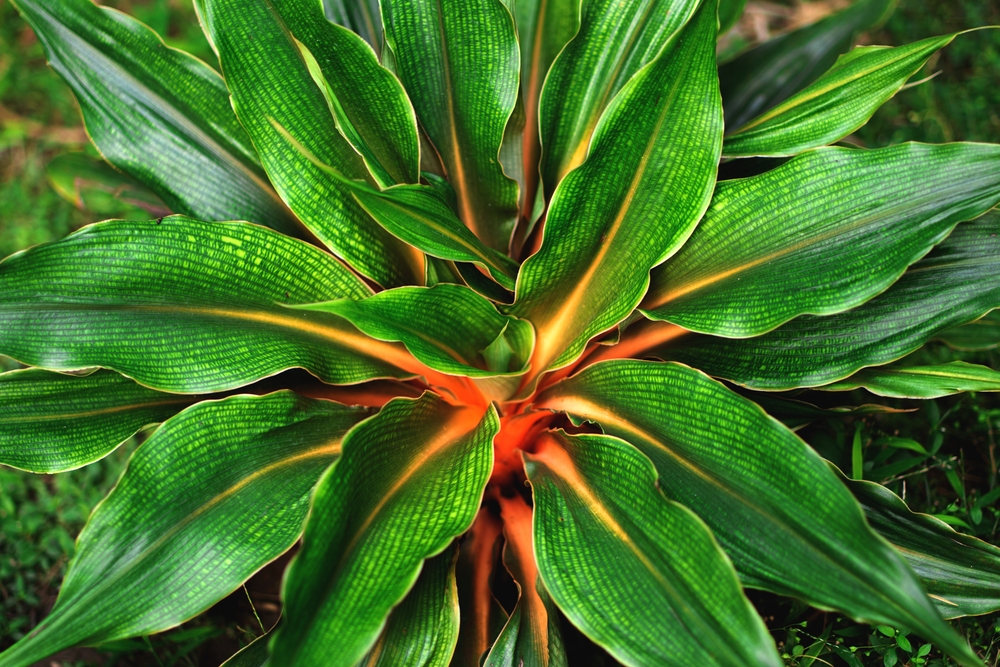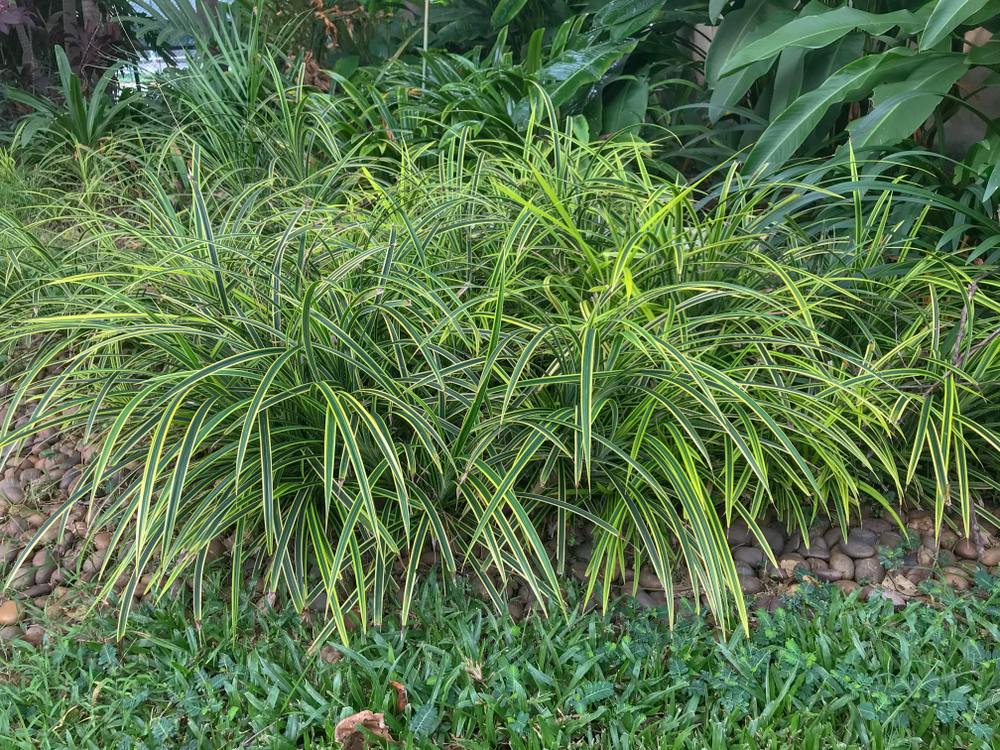Spider plants are popular plants chosen to liven up indoor spaces. These plants are known for their ability to cleanse the air, eliminating up to 95 percent of airborne toxic substances. Not only do they add a touch of color and life to a space, but they’re functional for clean living and can even help improve a room’s humidity. Let’s look at some of the best types of spider plants.
Types of Spider Plants
If you’re considering adding one of these to your home, you should know that there are over 200 types of spider plants worldwide. Below are 10 great choices.
Hawaiian Spider Plant
Also known as the golden glow, the Hawaiian spider plant is a miniature spider plant with shiny green leaves. This Hawaiian plant is a favorite regarding indoor placement, as its bold color instantly brightens a room. Despite its smaller size, its leaves are broader than other spider plants.
This exotic plant requires very little water and thrives in full sun to partial shade.
Purple Spider Plant
The purple spider plant, or variegated Moses in the cradle, is a neat choice for someone looking for a pop of color. The fragrant leaves of this fast-growing plant grow in shades of purple and green. The plant also blooms violet flowers with a sweet scent.
The purple spider plant does well in full sunlight and regular watering. It can grow up to four feet tall and two feet wide.
Bonnie Spider Plant
If you’re looking for an adorable indoor accent, you’ll want to check out the bonnie spider plant. This plant is a curly variety, meaning its long leaves curl into pleasing twists and turns for a fleshed-out appearance.
Bonnie spider plants can tolerate low light, but their stripes will become brighter and more pronounced with more light exposure.
Ocean Spider Plant
Scientifically known as chlorophytum comosum ocean, the ocean spider plant is a small plant ideal for small spaces like bedrooms or apartments. The plant grows short, broad leaves with a spiky appearance and a classic spider plant color scheme.
The ocean spider plant can grow up to 18 inches and sprouts tiny white flowers. It will grow in full sun to partial shade.
Variegated Spider Plant
The variegated spider plant, also known as vittatum, is the most popular variety in the group. Its broad leaves make it the ideal ornamental plant, boasting bright green stalks with a stripe of creamy yellow down the center.
The vittatum is an easy plant to tend. It tolerates lack of sunlight and drought very well and will thrive in pots or hanging baskets.
Shamrock Spider Plant
Choose the shamrock spider plant (also known as the green spider plant) if you have a room offering tons of indirect sunlight. This rare spider plant often displays much darker green leaves than other spider plants. While it may have a faint, lighter stripe down the middle of its stalks, many remain fully dark green.
The leaves are also thick and have a high-shine finish, which gives the plant a unique charm.
The shamrock spider plant prefers even moisture and grows rapidly. It’s particularly great at eliminating formaldehyde and carbon monoxide from the air.
Fire Flash
The fire flash spider plant is a unique way of capturing your guests’ attention. This little plant sprouts broad leaves that are unlike any other spider plant.
But what sets this plant apart is its coloration. The fire flash, also known as green orange, boasts a bright orange color at the base of its leaves. The color transitions to deep green, leaving you in awe of its appearance.
Reverse Spider Plant
This breed is one of the types of spider plants that get its name from the colors of its leaves. While common spider plants, such as the variegated spider plant we mentioned earlier, have green leaves with a yellow stripe, the reverse spider plant boasts a bold, dark-green runner down the center with soft, yellow edges.
The reverse spider plant can grow very large and is popular among gardeners.
Zebra Spider Plant
The zebra spider plant, also known as Bichetii grass, is much like the reverse spider plant in that it features yellow edges with a bold, green center. However, the leaf edges on this plant are much thicker and more pronounced than the ones on the reverse plant.
This unique spider plant can be challenging to find in the average nursery, but it certainly makes a statement. It’s easy to grow and maintain, requiring little water and tolerating various levels of sunlight.
Lemon Spider Plant
The lemon spider plant, formally known as chlorophytum comosum lemon, is another solid color spider plant that lacks the famous stripes for which most varieties are known.
The lemon spider plant is similar to the green spider plant in its solid green color. This variety has a yellow-green tint, offering a bright appearance with vibrant leaves.
Final Thoughts
Spider plants are super easy to take care of, so even if you lack a green thumb, you can still enjoy them in your home. Try adding one of these varieties to brighten a dark room and filter out toxic air. Spider plants can also be grown outdoors in the right climate.
